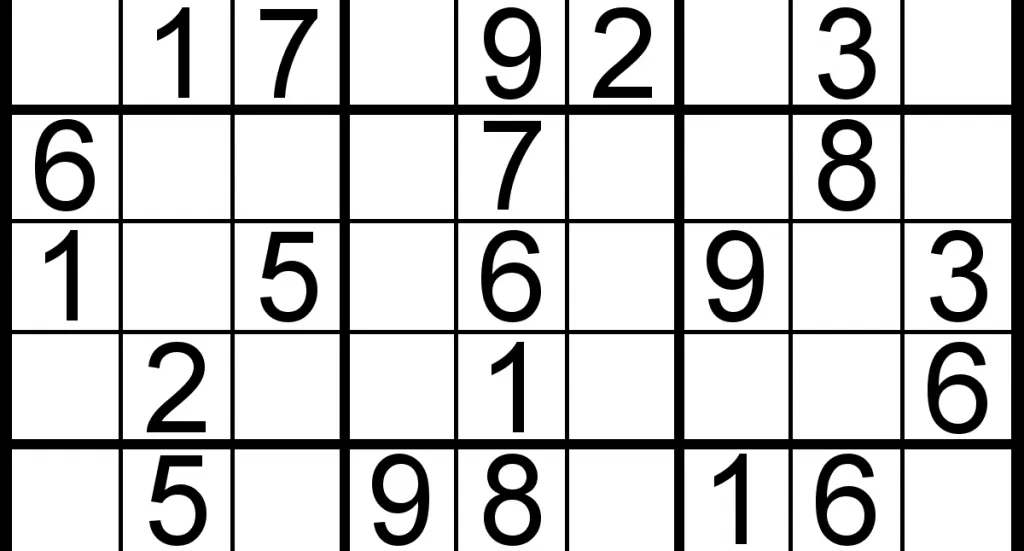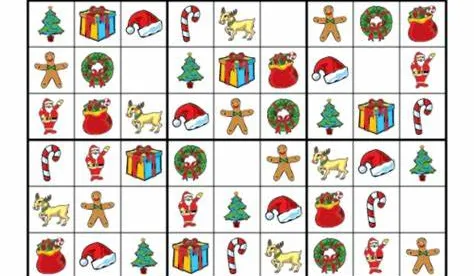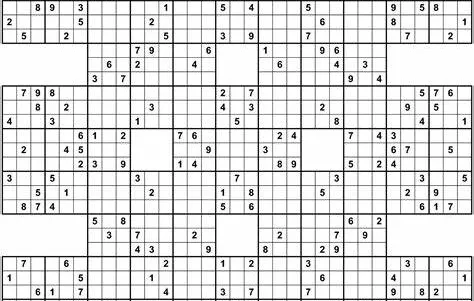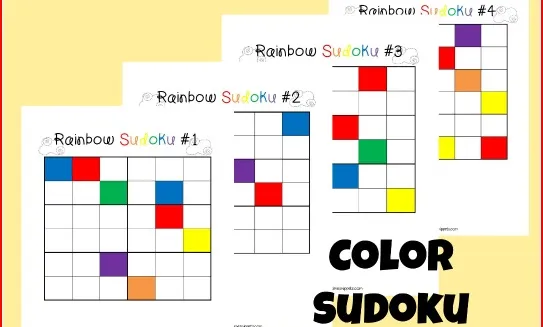Sudoku System Requirements (Minimum)
| OS: | Win xp, 7, 8 or win 10 |
| PROCESSORE: | Intel Dual Core 3.2 GHz |
| RAM: | 1 GB |
| VIDEO CARD: | Intel HD 3000 |
| VERTEX SHADER: | 5.1 |
| DISK SPACE: | 500 MB Free Space |
Sudoku System Requirements (Recommended)
| OS: | Win xp, 7, 8 or win 10 |
| PROCESSORE: | Intel Core i3 |
| RAM: | 1 GB |
| VIDEO CARD: | Intel 82945G Express |
| VERTEX SHADER: | 5.1 |
| DISK SPACE: | 500 MB Free Space |
Sudoku, derived from the Japanese term “sūdoku,” which translates to “digit-single,” is a brain-teasing puzzle that’s all about logic and numbers. Originally known as “Number Place,” this game revolves around placing digits in a grid strategically. The classic version entails a 9×9 grid where the objective is to fill it with numbers so that every column, row, and each of the nine 3×3 subgrids within the grid, often called “boxes,” “blocks,” or “regions,” contains all the digits from 1 to 9. A well-posed Sudoku puzzle comes with a partially filled grid and has only one correct solution.

Interestingly, variations of Sudoku-like puzzles made their way into French newspapers during the 19th century. However, the puzzle didn’t truly come into its own until 1979 when it appeared in puzzle books, still under the name “Number Place.” It wasn’t until 1986 that the modern Sudoku, bearing its Japanese name, “Sudoku,” meaning “single number,” started gaining global recognition. Its breakthrough moment in the West came in 2004 when it debuted in a U.S. newspaper and later in The Times (London). This surge in popularity can be attributed to Wayne Gould, who crafted a computer program capable of generating unique puzzles at a rapid pace.
History of Sudoku
Number puzzles made their debut in newspapers during the late 19th century when French puzzle enthusiasts began to tinker with the concept of magic squares by strategically removing numbers. A pivotal moment occurred on November 19, 1892, when the Paris daily newspaper Le Siècle published a partially filled 9×9 magic square, complete with 3×3 subsquares. Although this puzzle wasn’t quite what we now recognize as Sudoku, as it involved double-digit numbers and required arithmetic rather than pure logic to solve, it did share some crucial characteristics. Specifically, each row, column, and subsquare totaled the same sum.

Fast forward to July 6, 1895, and a rival newspaper, La France, refined the concept further, creating a puzzle that closely resembled the modern Sudoku. They dubbed it the “carré magique diabolique,” which translates to the “diabolical magic square.” This version simplified the 9×9 magic square puzzle, ensuring that each row, column, and broken diagonal contained only the numbers 1 through 9, although it didn’t explicitly label the subsquares. Despite the absence of markings, each 3×3 subsquare indeed consisted of the numbers 1 through 9, and the additional constraint on the broken diagonals resulted in a puzzle with a unique solution.
These weekly number puzzles became a regular feature in French newspapers, including L’Écho de Paris, for roughly a decade. However, they gradually faded from the public eye around the time of World War I.
Modern Sudoku
The modern Sudoku puzzle, although it surfaced anonymously, is widely believed to have been crafted by Howard Garns, a retired architect and freelance puzzle constructor hailing from Connersville, Indiana. This brain-teasing challenge first made its debut in 1979, courtesy of Dell Magazines, under the name “Number Place.” Garns' name consistently appeared on the list of contributors in issues of Dell Pencil Puzzles and Word Games that featured the Number Place puzzle, while it remained conspicuously absent from issues that didn’t. Unfortunately, Garns passed away in 1989 before witnessing the global phenomenon his creation would become. Whether Garns drew inspiration from the earlier French newspaper puzzles remains a point of uncertainty.
The puzzle found its way to Japan through the efforts of Maki Kaji, the president of the Nikoli puzzle company. In April 1984, it was introduced in the publication “Monthly Nikolist” under the title “Sūji wa dokushin ni kagiru,” which translates to “the digits must be single” or “the digits are limited to one occurrence” in English. The name was eventually shortened to “Sudoku,” using only the first kanji of the original compound words to create a more concise moniker. It’s worth noting that “Sudoku” is a registered trademark in Japan, and the puzzle is often referred to as “Number Place” or simply “NumPla” for short.

In 1986, Nikoli brought two significant innovations to the puzzle. First, they restricted the number of initially provided digits to no more than 32. Second, they introduced the concept of “symmetry,” ensuring that the given digits were placed in cells that exhibited rotational symmetry. Today, Sudoku enjoys widespread popularity and can be found in various publications worldwide.







